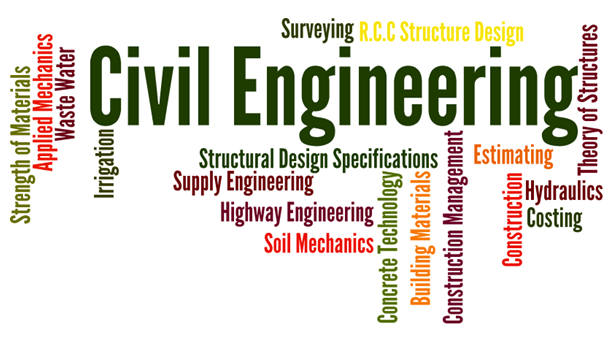 Nowadays the word "Civil Engineering" is
not new, but most people can not exactly understand what civil engineering
though they often listen to the word. For the start made this blog, I wrote
the first article entitled " Acquainted with civil engineering". It
aims to provide little information or understanding about what is civil
engineering, before it is too far discussing the ins and outs of the world of
civil engineering. By discussing this title does not mean I know more about the
world of civil engineering, what I describe here is the personal understanding
of course different from the others, but it certainly has the same basic
philosophy. Some information role in this article I extracted from the books
and articles on the internet I have ever read before.
Nowadays the word "Civil Engineering" is
not new, but most people can not exactly understand what civil engineering
though they often listen to the word. For the start made this blog, I wrote
the first article entitled " Acquainted with civil engineering". It
aims to provide little information or understanding about what is civil
engineering, before it is too far discussing the ins and outs of the world of
civil engineering. By discussing this title does not mean I know more about the
world of civil engineering, what I describe here is the personal understanding
of course different from the others, but it certainly has the same basic
philosophy. Some information role in this article I extracted from the books
and articles on the internet I have ever read before.
Many of my friends used to ask, "What is a civil
engineering ??". Civil engineering can be defined as a branch of
engineering science that studies how to design, build, renovate not only the
buildings and infrastructure, but also covers the environment for the benefit
of human life. Most defines Civil Engineering is one branch of engineering
science that studies civil engineering structures and also learn about the
consequences of the construction of civil buildings on surrounding communities
and also especially to the environment. Civic buildings are buildings intended
development goals for the benefit of the wider community. Such as hospitals,
schools, highways, bridges, weirs, dams, and so forth.
Civil engineering has a broad scope, in which
knowledge of mathematics, physics, chemistry, biology, geology, environment
until the computer has the role of each. Civil engineering was developed in
line with the needs of man and the movement, until it can be said of this
science can transform a forest into a big city
In all its complexity, civil engineering is divided
in several branches of science including:
- Structural: The branch that studies the structural problems of the materials used for construction. A form of the building may be made of several choices of materials such as steel, concrete, wood, glass or other materials. Each of these materials has its own characteristics. Science field study structural properties of the material can be chosen so that in the end the material which is suitable for the building type. In this field studied more in depth issues related to the structural design of buildings, roads, bridges, tunnels from building foundations to the building is ready for use.
- Geotechnical: Branches are studying the structure and properties of a wide range of soil and rock in sustaining a building that will stand on it. Its scope can be field investigations that are inquiry soil conditions of an area, as well as planning the construction of a laboratory investigation of soil and rock, such as embankment (embankment), excavation (excavation), soft ground tunnel (soft soil tunnel), the tunnel rock (rock / mountain tunnel), dam soil / rock (earth dam, rock-fill dam), and others.
- Construction Management: The branch that studies the problems in construction projects related to the economy, job scheduling, return of capital, the cost of the project, all matters relating to legal and licensing of building up the organization of work in the field so that the building is expected to be completed on time.
- Hydrology: The branch that studies the water, distribution, and control problems. This field includes, among others, the branch of hydrology (with respect to the weather, rainfall, river discharge, etc.), hydraulics (material properties of water, the water pressure, the driving force of water, etc) and waterworks such as ports, irrigation, reservoirs / dams (dam), the canal.
- Environmental Engineering: branch that studies issues and environmental issues. This field includes, among others, the provision of clean water infrastructure, waste management and sewage, river pollution, noise pollution and air until recovery techniques.
- Transportation: The branch that studies of the transport system in the planning and implementation. This covers areas including construction and pengaturanjalan highway, construction of airports, terminals, stations and management.
- Information Technology in Civil Engineering: The new branch that studies the application of computers for calculation / modeling a system under development or research project. This field includes, among others, exemplified in the form of modeling Structures (Structural of material or CAD), modeling the movement of ground water or waste, environmental modeling with GIS technology (Geographic information system).
So what could I have outlined as an introduction to
the world of civil engineering. Hopefully useful and provide additional
knowledge for all of us. See you in the subsequent articles.
Reference : Wikipedia
Tidak ada komentar:
Posting Komentar